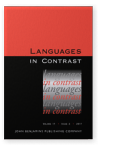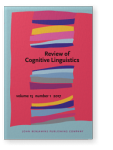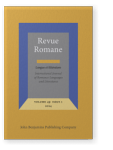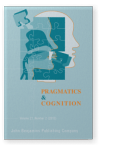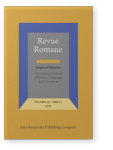Rainer Vesterinen
List of John Benjamins publications for which Rainer Vesterinen plays a role.
2017 Mood choice in complements of Spanish comprender and Portuguese compreender (‘understand’) – distribution and meaning Languages in Contrast 17:2, pp. 279–302 | Article
The present paper analyzes the occurrence of indicative and subjunctive complements of the verbs comprender (Spanish) and compreender (Portuguese) in European Spanish and European Portuguese. A quantitative analysis based on 400 occurrences of the complements randomly selected from the newspaper… read more
2017 The Portuguese future subjunctive: A dominion analysis Review of Cognitive Linguistics 15:1, pp. 58–82 | Article
Although the analysis of the Portuguese future subjunctive mood would contribute to a greater understanding of the general meaning of the subjunctive mood, this verb form has received considerably little attention compared to the other subjunctive forms, namely, the past and present subjunctives. read more
2014 Factividade e modo verbal Revue Romane 49:1, pp. 53–68 | Article
The traditional way of explaining the subjunctive mood in Portuguese is utterly related to the distinction made between reality and non-reality. That is, while the indicative mood has been explained in terms of reality, the subjunctive has been the mood of non-reality. Although this explanation… read more
2013 Instructions or dominion? The meaning of the Spanish subjunctive mood Pragmatics & Cognition 21:2, pp. 359–379 | Article
In a highly interesting study, Dam and Dam-Jensen (2010) put forward the idea that the indicative and the subjunctive mood in Spanish complementizer phrases can be explained by the instructions they convey. The indicative instructs the addressee to locate the situation created by the verb relative… read more
2012 O modo verbal em expressões impessoais com o verbo ser Revue Romane 47:1, pp. 76–97 | Article
The subjunctive mood has frequently been explained in terms of unreality, presupposition, non-assertion and the distinction between new and old information. Although these explanations offer a partial account of the semantics of this mood, it is shown that many occurrences of the subjunctive mood… read more
